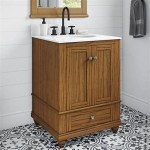ADA Bathroom Grab Bars Requirements
Accessibility is paramount in creating inclusive spaces, and bathrooms are no exception. The Americans with Disabilities Act (ADA) Standards for Accessible Design provides specific guidelines for grab bars in bathrooms to ensure safety and usability for individuals with disabilities. Understanding these requirements is crucial for architects, contractors, designers, and anyone involved in bathroom construction or renovation.
Grab Bar Placement and Positioning
Proper placement of grab bars is essential for their effectiveness. The ADA Standards dictate specific locations for grab bars in different areas of the bathroom. For example, beside toilets, grab bars must be installed on the side wall closest to the toilet, with one bar positioned horizontally at the back and another vertically on the nearest side wall. In showers, grab bars should be installed on the back wall or control wall, horizontally and vertically for optimal support. Bathtubs require grab bars on three sides, with a horizontal bar on the back wall and vertical bars on the control wall and head end wall.
Precise positioning is also critical. The ADA Standards specify mounting heights and distances from other fixtures. Toilet grab bars, for instance, must be mounted 33 to 36 inches above the finished floor. Shower and bathtub grab bars should be installed 33 to 36 inches above the shower or bathtub floor. These specific measurements ensure the bars are within easy reach for individuals with varying mobility levels.
Grab Bar Dimensions and Specifications
The ADA Standards also address the physical characteristics of grab bars, including diameter, length, and gripping surface. Grab bars must have a diameter of 1-1/4 to 1-1/2 inches, providing a comfortable and secure grip. The gripping surface must be knurled or textured to prevent slipping, even when wet. While the Standards do not dictate specific lengths for grab bars, they emphasize the importance of providing adequate length to offer sufficient support. For example, a grab bar beside a toilet should be at least 42 inches long, while bars in showers and bathtubs should be long enough to provide support throughout the entire transfer process.
Load-bearing capacity is another key consideration. ADA-compliant grab bars must be able to withstand a concentrated load of 250 pounds applied in any direction. This ensures the bars can safely support individuals of varying weights and strengths. Using robust materials and appropriate anchoring techniques is critical for meeting this requirement.
Accessibility Considerations Beyond Grab Bars
While grab bars are essential components of accessible bathrooms, other factors contribute to overall usability. These include providing adequate maneuvering space around fixtures, ensuring accessible routes to and from the bathroom, and incorporating accessible features such as roll-in showers and adjustable-height sinks. The ADA Standards provide comprehensive guidance on all aspects of accessible bathroom design.
Bathroom flooring should also be considered. Slip-resistant surfaces are vital for preventing falls, especially in wet areas. Using textured tiles or applying slip-resistant coatings can enhance safety. Adequate lighting is also important, as it improves visibility and reduces the risk of accidents. Bright, evenly distributed lighting, particularly in the shower and bathtub areas, is recommended.
Clearance beneath fixtures, such as sinks and lavatories, is also essential for individuals using wheelchairs. The ADA Standards specify minimum clearance heights to allow for comfortable access.
Compliance and Enforcement
Compliance with the ADA Standards is not only ethically responsible but also legally required for most public accommodations and commercial facilities. Regular inspections and adherence to the Standards ensure accessibility for individuals with disabilities. Building codes often incorporate the ADA Standards, and local authorities enforce compliance through inspections and permitting processes.
Resources are available to assist with understanding and implementing the ADA Standards. The ADA National Network provides technical assistance and training on accessibility guidelines. Architects, contractors, and designers should consult the ADA Standards and seek expert advice to ensure their projects meet accessibility requirements.
Staying updated with any revisions or amendments to the ADA Standards is also crucial. The Department of Justice periodically updates the Standards to reflect evolving best practices and technological advancements. Keeping abreast of these changes ensures ongoing compliance and promotes inclusive design practices.

Is A Vertical Grab Bar Required By Ada Grabbars Com

Ansi Vs Ada Restroom Grab Bar Requirements Evstudio

Grab Bars In Accessible Toilet Compartments Ada Approved Harbor City Supply

Ada Toilet Grab Bar Placement Guide Commercial

Ada Requirements For Grab Bar Height In Bathtubs Oc Bars
Grab Bar Ada Accessibility Articles Rethink Access Registered Specialist Tdlr Ras

Ada Compliant Bathroom Design Grab Bars

Handicap Bathroom Grab Bars Height

Ada Bathroom Requirements Toilet Height Grab Bars Stall Accessories More Laforce Llc
Accessible Version







